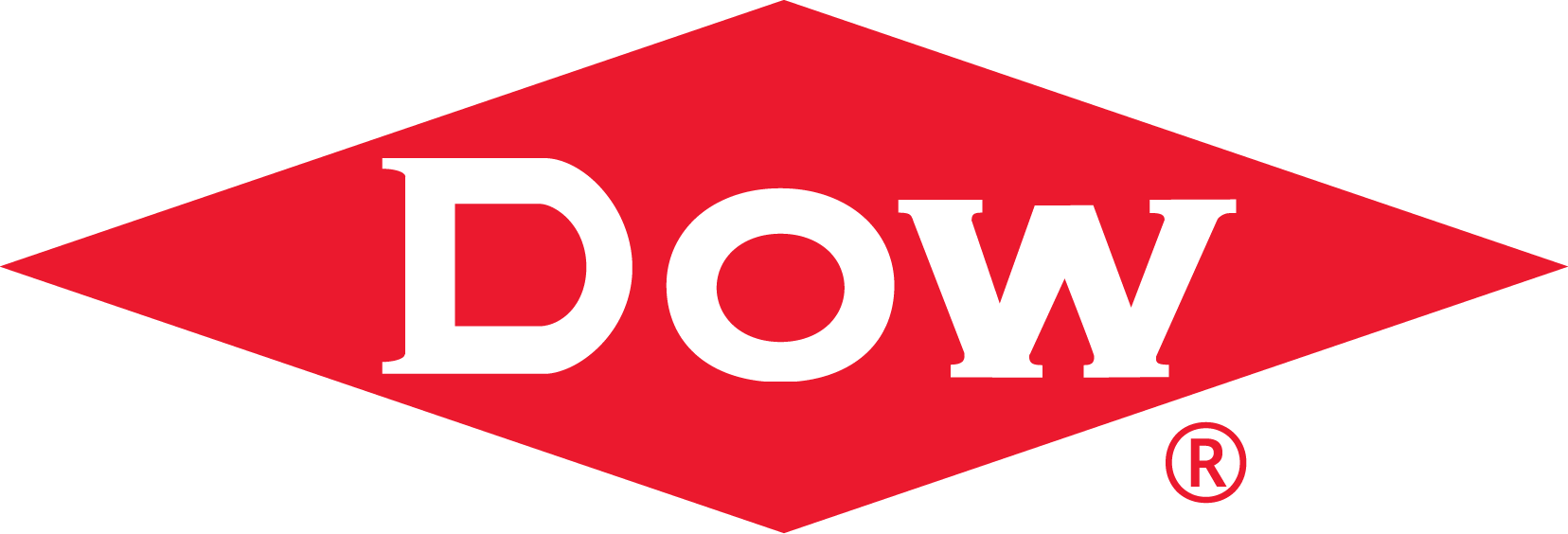Ignite Possibilitieswith C3 AI + Microsoft
View Our Sessions From Moscone Center
C3 AI Breakout Session: Build Your Own Enterprise Application From Scratch with the C3 Agentic AI Platform
Turn ideas into production software fast. With the C3 Agentic AI Platform, build Enterprise AI apps instantly, using low-code Application Canvas or full-code VSCode tools. We’ll demo the end-to-end journey: define goals in natural language, generate an app instantly, refine with code, and deploy securely with full governance. Create workflows, agents, and dashboards in minutes, connect to data and APIs, and ship with built-in versioning and observability.
C3 AI Breakout Session: Capture Value at Scale Through Agentic Workflows with C3 AI
Experience how C3 AI Agentic Process Automation transforms enterprise work. Unlike rules-based RPA systems or rigid workflow engines, C3 AI Agentic Process Automation enables end-users to describe and execute sophisticated workflows. C3 AI Agentic Process Automation can leverage all data types — including both enterprise and external data. It can describe both fully automated and human-in-the-loop workflows with intelligence, reliability, and adaptability at scale.
Partnering for AI Excellence
C3 AI and Microsoft accelerate Enterprise AI adoption by combining C3 AI’s industry-specific solutions with Microsoft’s ecosystem, enabling deeper insights, strategic decision making, and unparalleled scalability. Built on Azure, C3 AI’s scalable applications empower enterprises across sectors like manufacturing, healthcare, finance, government, and energy.

C3 AI
Thomas M. Siebel
Executive Chairman, C3 AI
“C3 AI has pioneered Enterprise AI for over a decade, during much of which we’ve collaborated closely with Microsoft to enable iconic organizations to solve some of the hardest business challenges of the 21st century,” said Thomas M. Siebel, Executive Chairman, C3 AI.
“This strategic alliance accelerates the adoption of Enterprise AI, benefiting customers with broadly available enterprise AI application software to achieve rapid time-to-value in supply chain optimization, production optimization, predictive maintenance, government efficiency, ESG goal attainment, and energy management.”

Microsoft
Judson Althoff
Chief Executive Officer, Microsoft Commercial Business
“With its proven AI-native software and extensive customer relationships, C3 AI is a key partner in Microsoft’s efforts to help customers address complex business and environmental challenges,” said Judson Althoff, Chief Executive Officer, Microsoft Commercial Business.
“This alliance will enhance current enterprise offerings and unleash new innovations to ensure both Microsoft and C3 AI’s customers continue to lead in attaining the benefits of digital transformation.”
How Microsoft & C3 AI Scale Enterprise AI
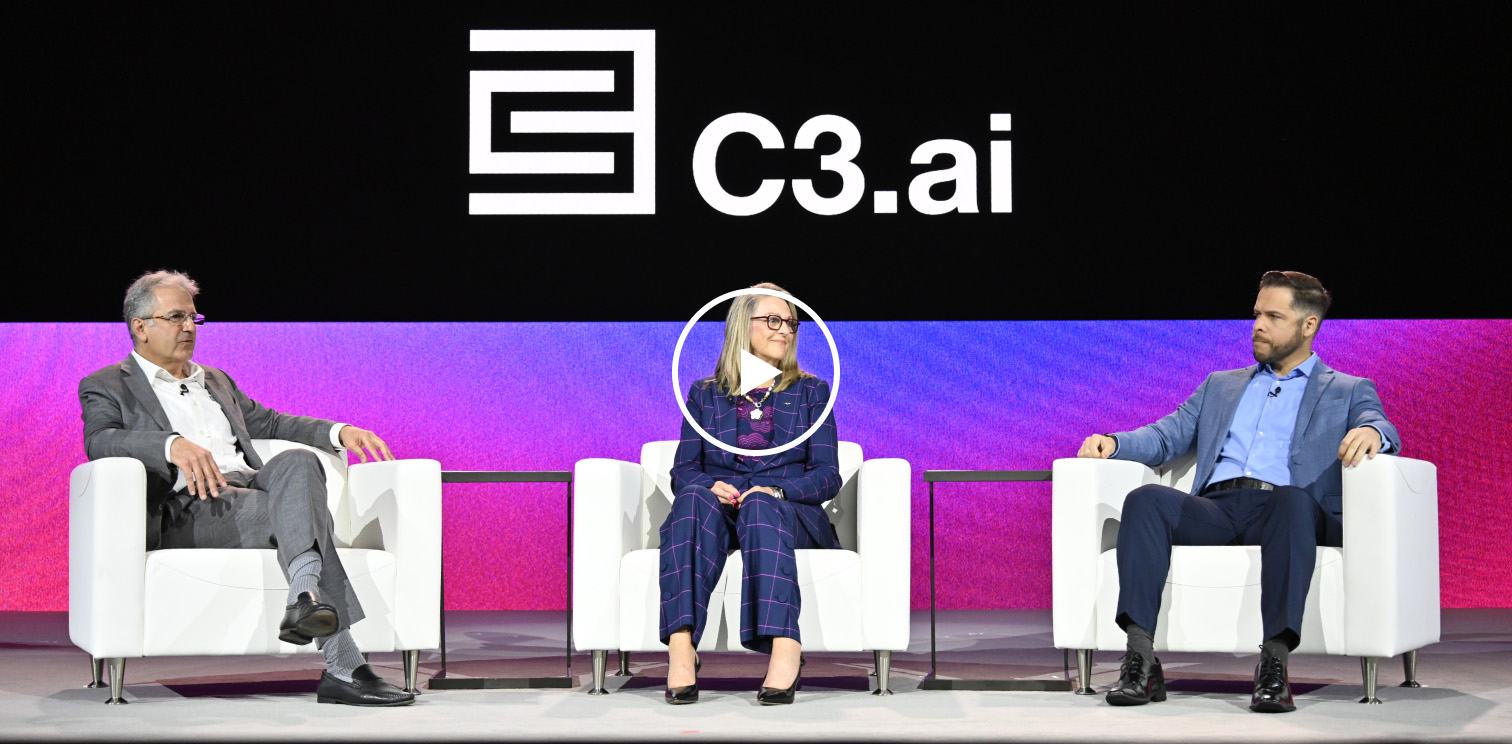
Dow, Microsoft, and C3 AI leaders discuss how Enterprise AI is transforming manufacturing at the materials science company — optimizing operations and boosting reliability.
Microsoft & C3 AI Customer Success
C3 AI leverages the comprehensive and trusted capabilities of Microsoft Azure to deliver transformative Enterprise AI applications that rapidly deliver significant business value.
Azure C3 AI Featured Solutions
All Azure C3 AI Applications are now available to transact on the Microsoft Azure marketplace and are fully integrated with a rich set of Azure services‚ including Azure Application Services (e.g. AKS), Azure Data Services (e.g. AzurePostgreSQL), and Azure AI Services (e.g. AzureAI).
Supply Chain Suite
-
Reduce costs and free up working capital
Learn more -
AI Insights to Mitigate Supply Chain Risks
Learn more -
Optimize Industrial Schedules and Forecast Accurately with AI
Learn more -
Transform your demand planning with enterprise AI
Learn more -
Improve Sourcing Decisions with AI Insights and Alerts
Learn more
Financial Services Suite
Defense & Intelligence Suite
State & Local Government Suite
-
Efficient, accurate, and fair market valuations
Learn more -
Uncover Intelligence Insights with Advanced Analytics
Learn more -
Serve Constituents Better with Fast, Accurate, and Traceable Answers Across Public Benefits and Programs
Learn more -
Improve constituent services and engagement with generative AI
Learn more
C3 Generative AI Featured Applications
Joint GTM Approach
C3 AI and Microsoft provide a cohesive Enterprise AI application development platform and pre-built AI applications.
Microsoft Azure + C3 AI
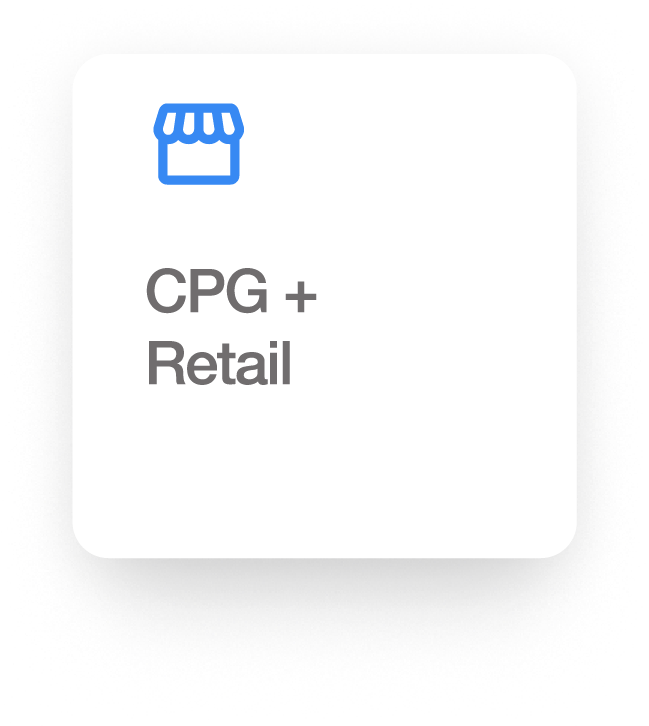
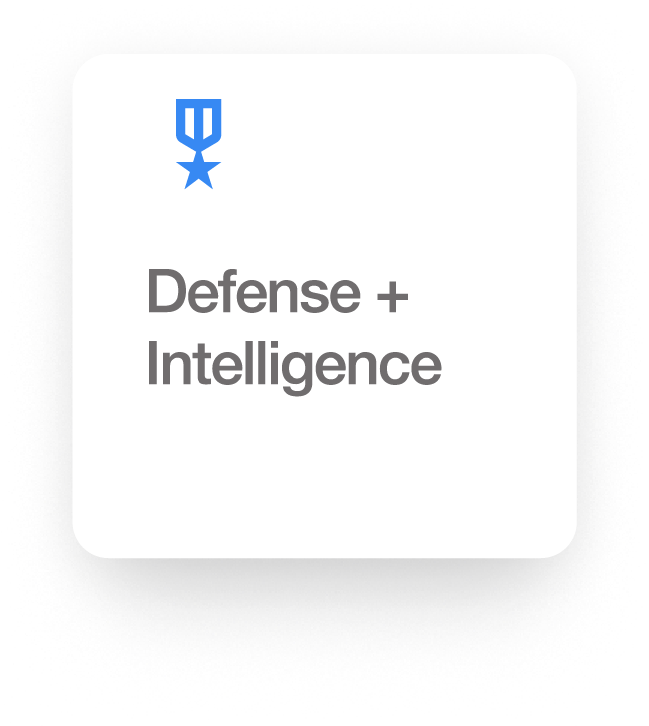

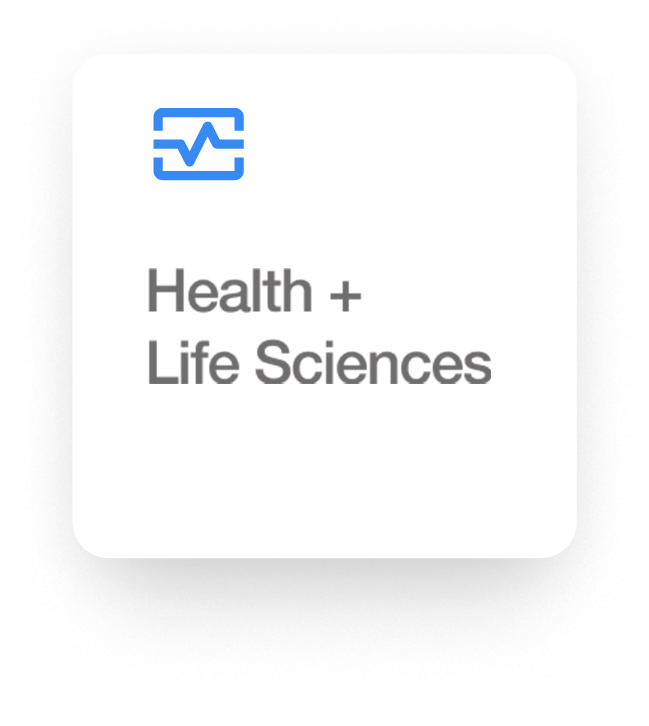
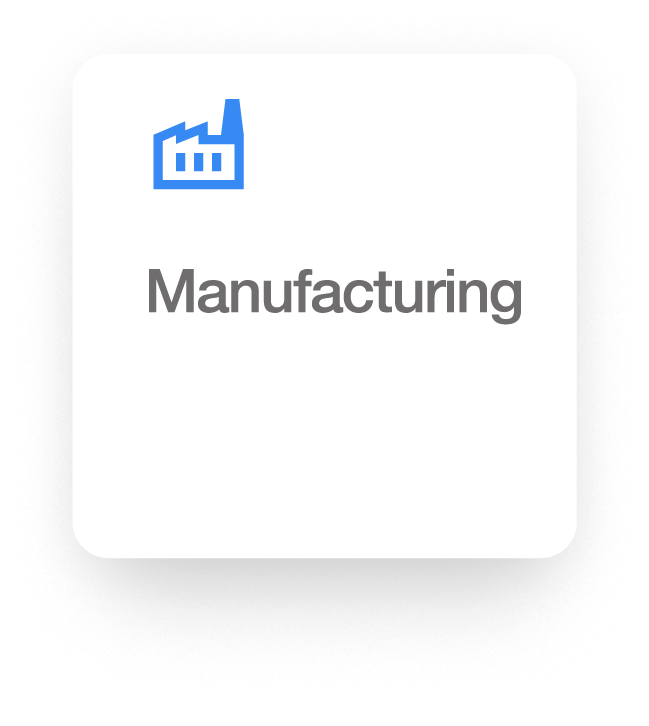

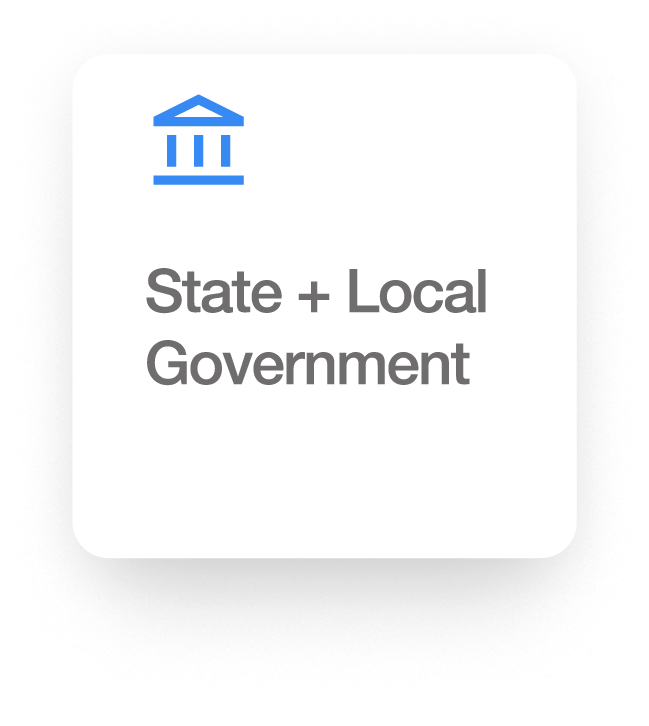
Azure AI Services
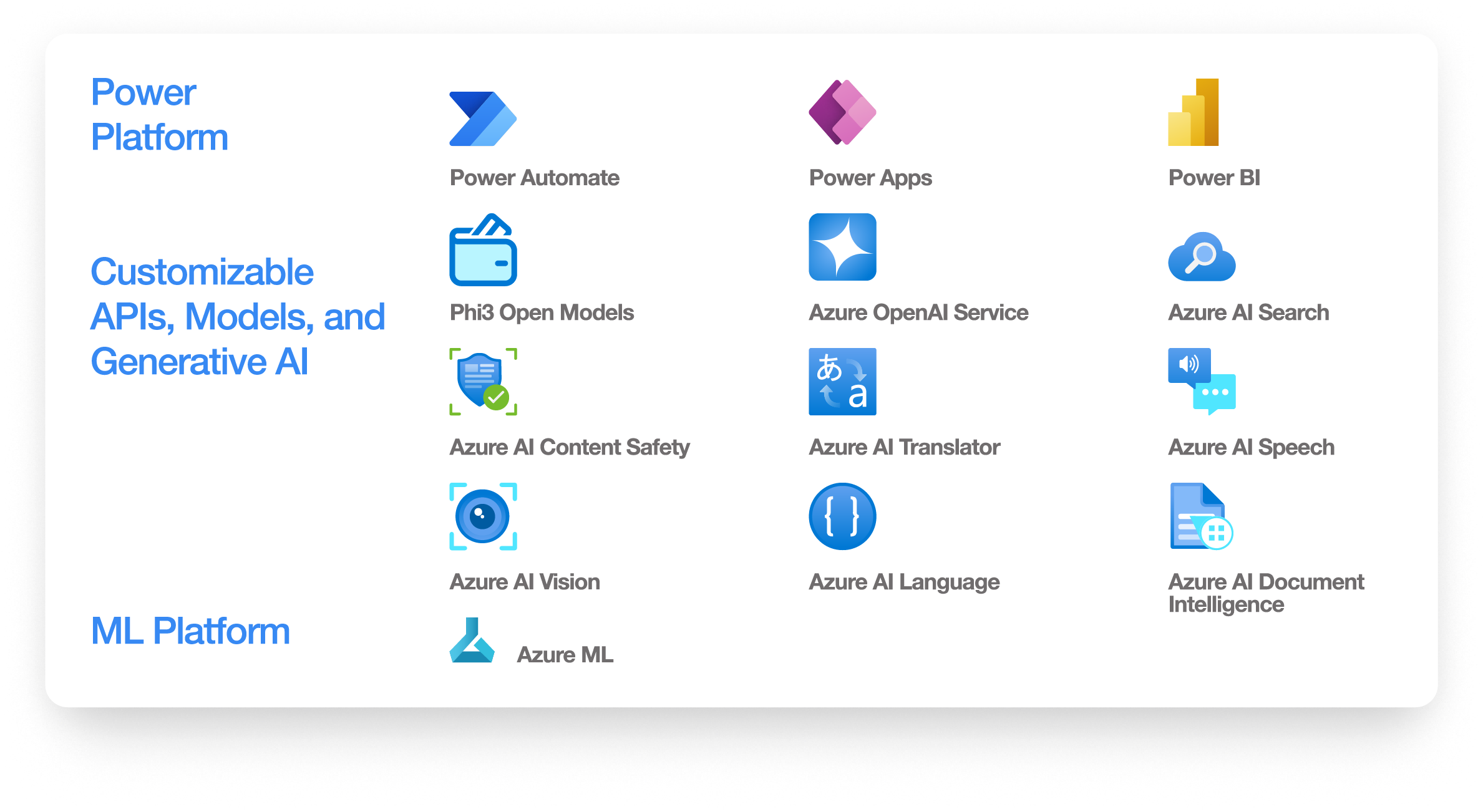
Pre-built C3 AI Applications
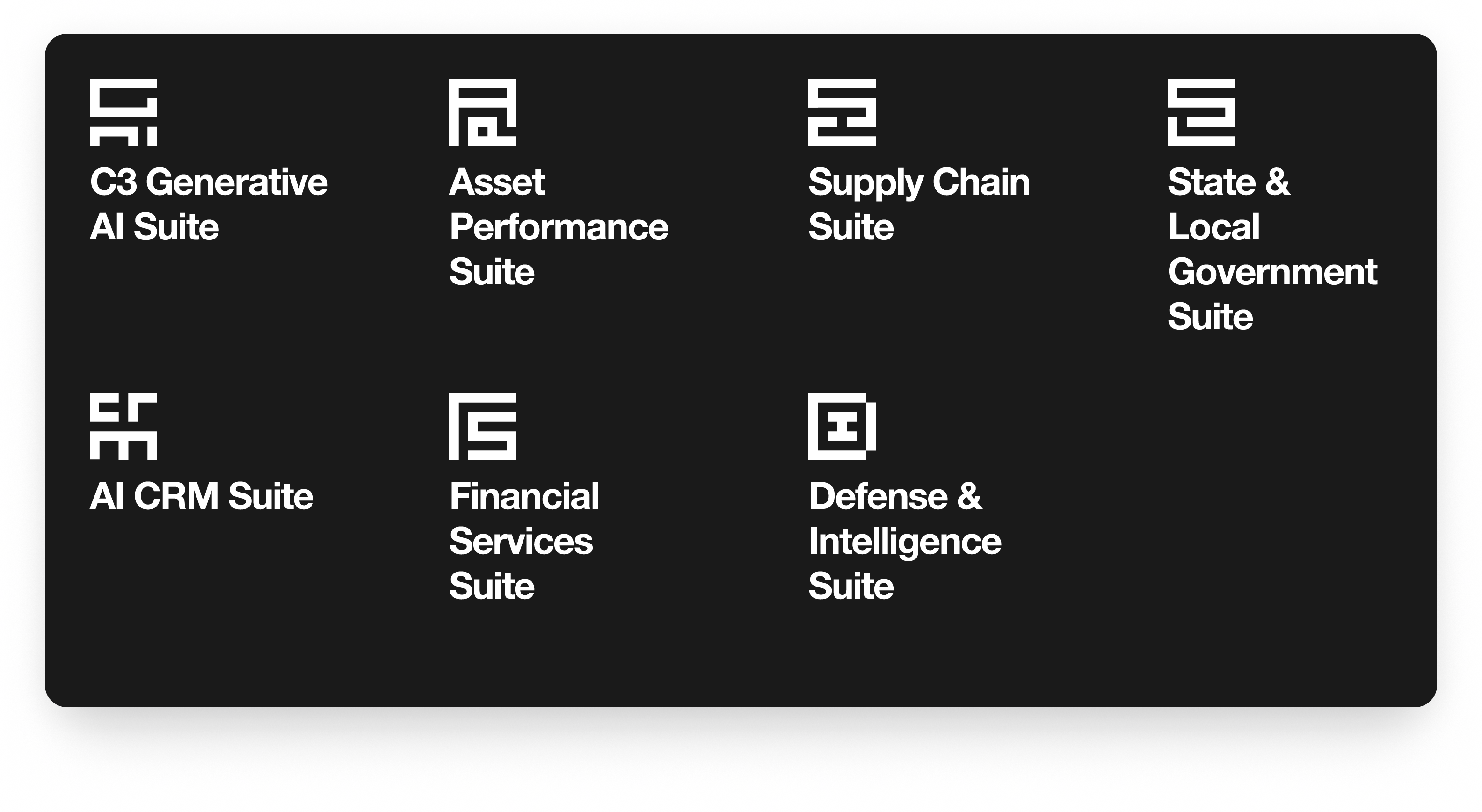
Infrastructure Services
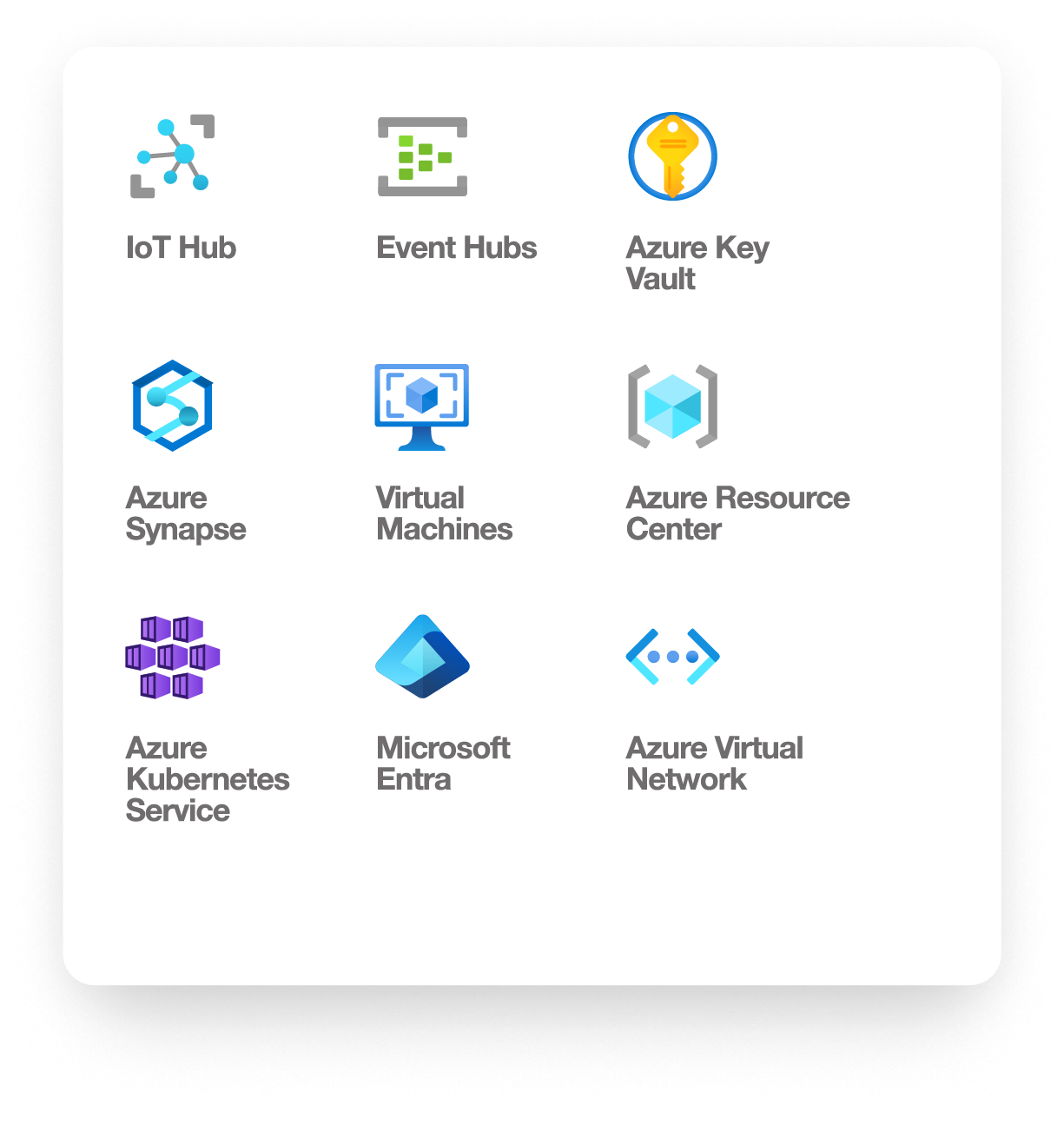
Data Services
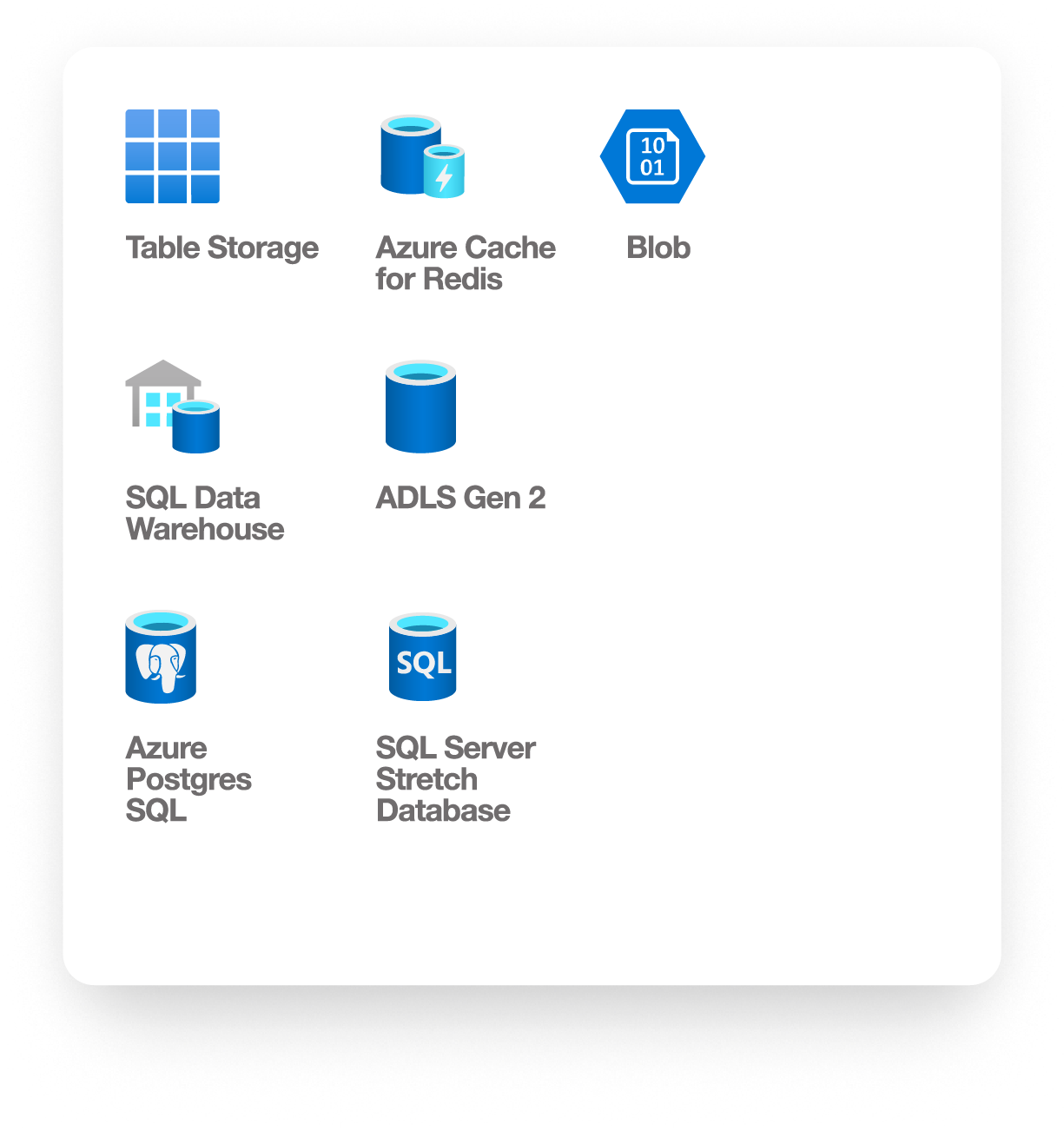
AI Application Development
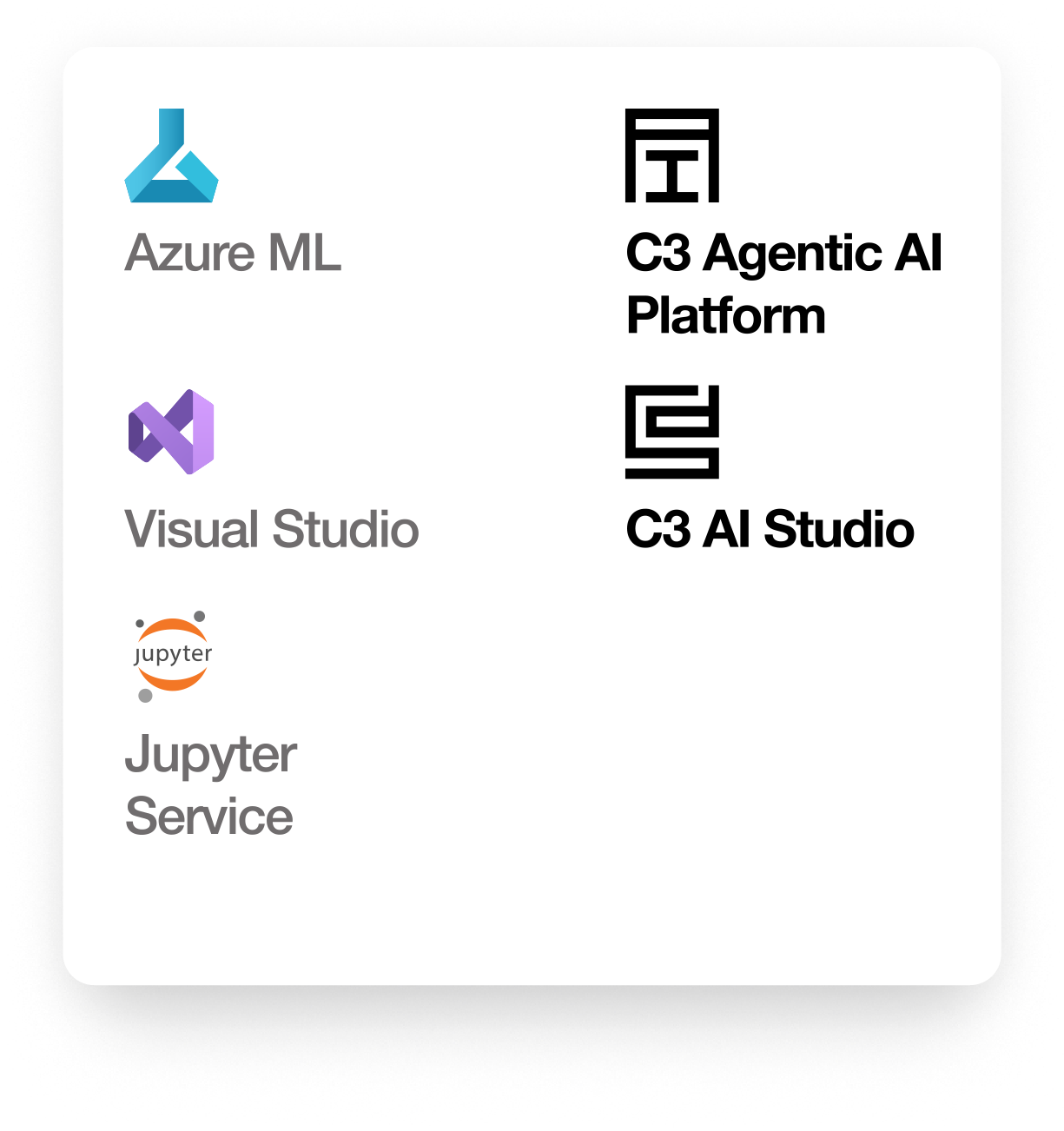
Productivity Applications
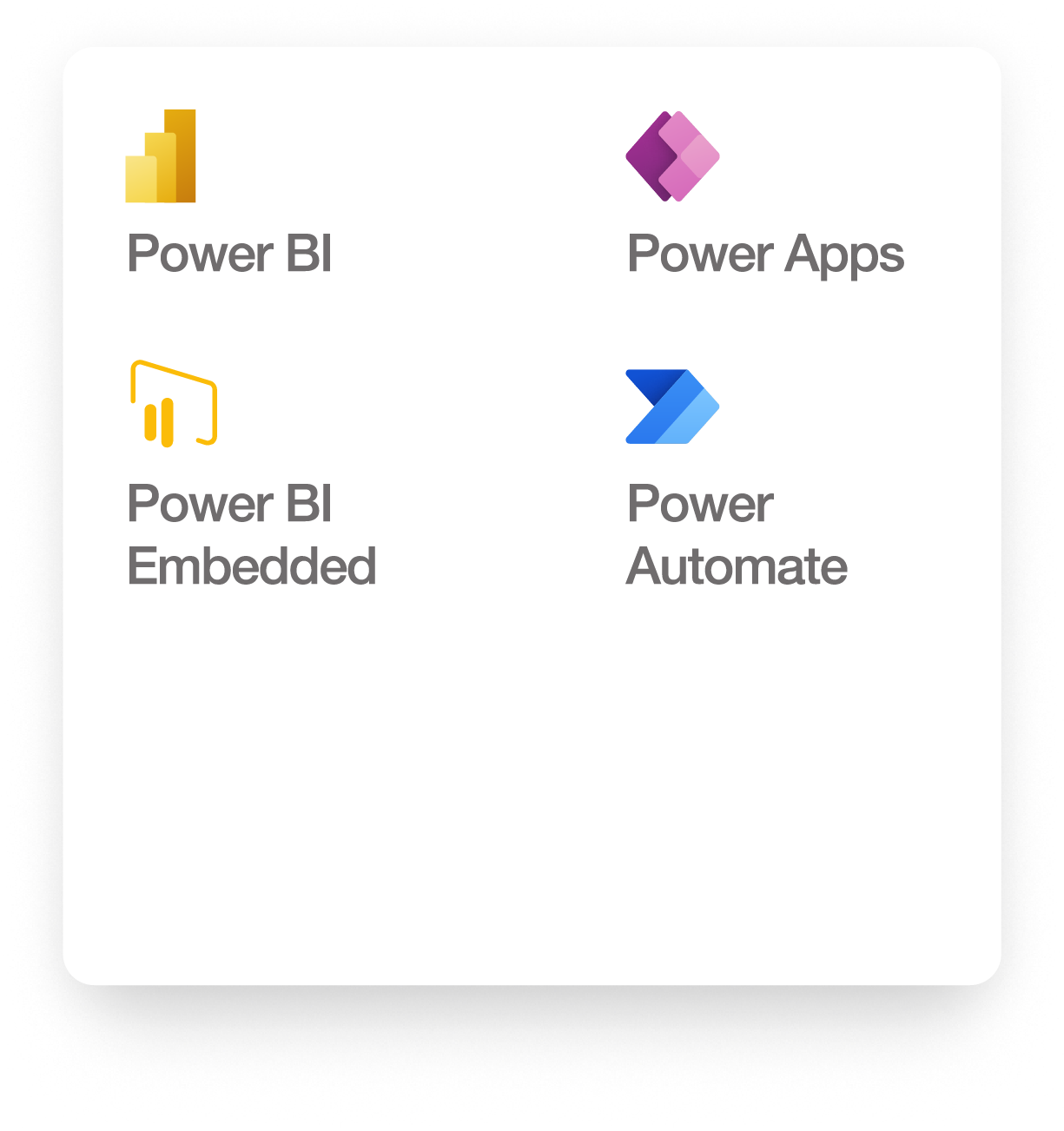
C3 AI Initial Production Deployment
Start Fast. Deliver Results. Scale with Confidence.
The C3 AI Initial Production Deployment is a proven, rigorous approach to help businesses select, configure, and implement a C3 AI application within just six months, showcase economic value, and set the foundation for accelerated deployment across the enterprise.
Includes
Unlimited use of the C3 AI application by end users
Unlimited C3 AI runtime during the six months
Unlimited access to C3 AI training curriculum
Deployed on Microsoft Azure
Unlimited customer developer, data scientist, analyst, and data engineer licenses
Guided C3 AI developer training sessions
Three C3 AI FTEs
Delivers
A working production application on the agreed scope
Scale-out plan and adoption playbook
Application explainer video for internal distribution
AI/ML application roadmap for your organization
Assessment of economic value at scale
End user training guide
Project read out
Training for your developers to maintain and extend the application for your organization
Take the Next Steps
Learn how our industry-leading Enterprise AI software products can help your organization.
Contact us at IR@C3.ai to learn more about investing at C3 AI.
For all other questions, please contact us here.








